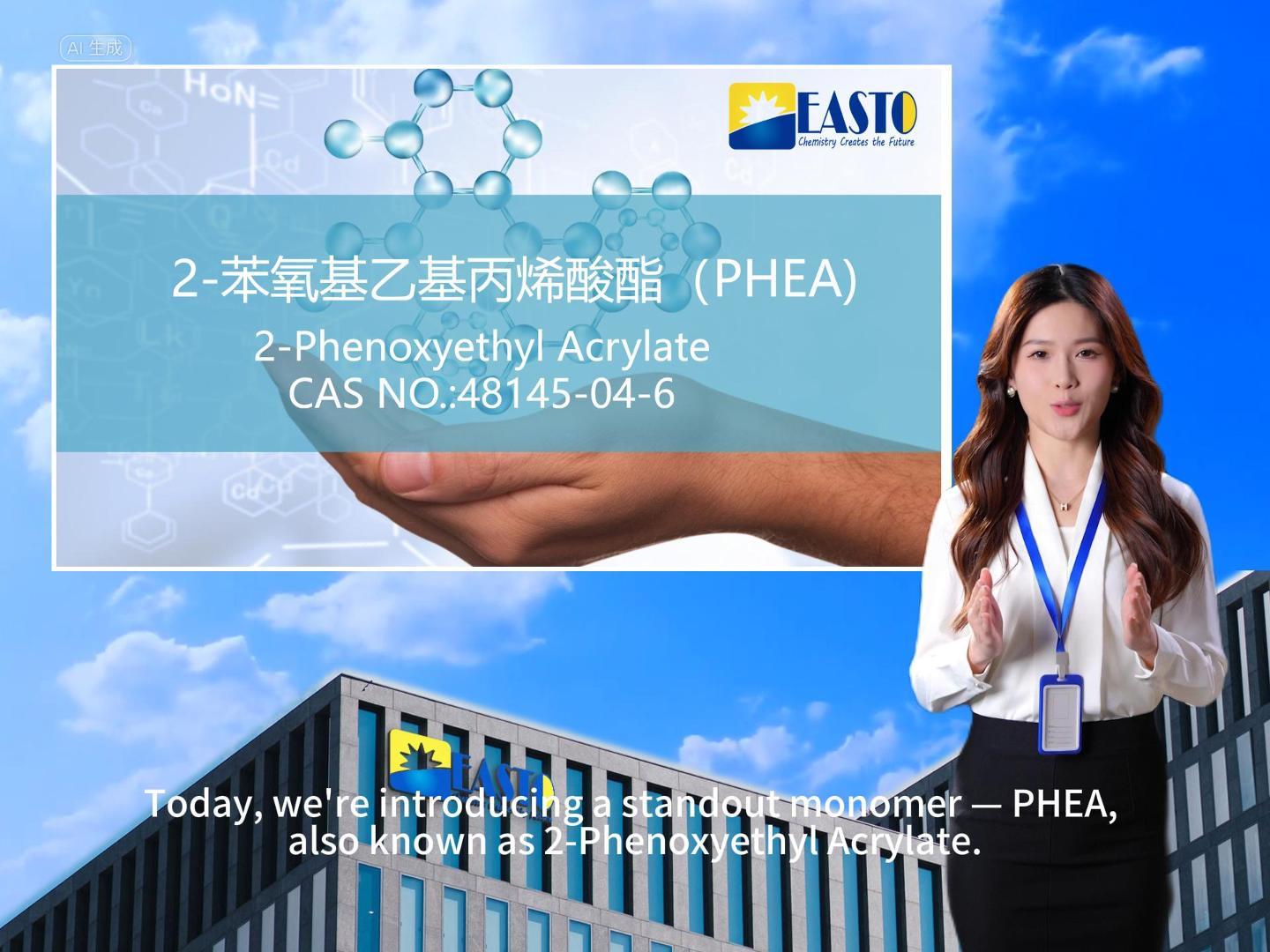Product Recommendation: 2-Phenoxyethyl Acrylate, CAS#: 48145-04-6 (PHEA)
Release time:
2025-04-28
Among functional acrylates, monofunctional monomers are widely valued for their viscosity-reducing capabilities, formulation flexibility, and controlled reactivity. This article highlights a uniquely structured monomer — 2-Phenoxyethyl Acrylate (PHEA, CAS# 48145-04-6) — discussing its structural features, performance characteristics, and major application areas.
1. Characteristics of Monofunctional Monomers
Monofunctional acrylates contain only one acrylate group that can participate in free radical polymerization. Key benefits of such monomers include:
Lower crosslinking density, resulting in enhanced flexibility and elongation of cured films;
Function as reactive diluents, reducing viscosity without introducing VOCs;
Good controllability during UV/EB curing due to moderate reactivity and compatibility.
Compared to multifunctional monomers, monofunctionals reduce shrinkage and internal stress, making them ideal for applications requiring flexibility and adhesion.
2. Structural Advantages & Properties of PHEA
2-Phenoxyethyl Acrylate (PHEA) is a monofunctional acrylate featuring a distinct aromatic ether structure, composed of three segments:
This unique structure imparts several advantages:
Enhanced flexibility – The ether linkage contributes to molecular softness and elasticity.
Thermal and UV stability – The aromatic ring improves resistance to yellowing and heat degradation.
Excellent compatibility – Its organic nature allows good miscibility with common resins and additives.
Balanced reactivity – The acrylate group reacts efficiently without leading to over-polymerization, aiding in system control.
PHEA offers a balanced combination of structural rigidity and molecular flexibility, making it an exceptional choice in many UV/EB-curable systems.
3. Application Areas of PHEA
Thanks to its superior properties, PHEA is widely used in various UV/EB-curable systems:
✅ UV-Curable Coatings
Enhances flexibility, adhesion, and anti-cracking performance in plastic, wood, and 3C product coatings. The aromatic group also contributes to surface hardness and scratch resistance.
✅ UV Inks
Used as a reactive diluent to lower viscosity, improve flow and color development, and enhance substrate adhesion — particularly suitable for flexo, gravure, and inkjet applications.
✅ 3D Printing Resins
In SLA/DLP photopolymer formulations, PHEA helps reduce shrinkage and improve cured part accuracy, especially for flexible or composite structures.
✅ Adhesives & Electronic Encapsulation
Its low internal stress and excellent adhesion make PHEA ideal for UV adhesives, potting compounds, and sensitive electronic materials.
Conclusion
2-Phenoxyethyl Acrylate (PHEA) combines structural stability with formulation versatility. Whether used in flexible coatings, UV inks, or high-precision 3D printing applications, PHEA proves to be a cost-effective and high-performance monomer.
If you're looking for a well-balanced, high-quality monofunctional acrylate, PHEA is a smart and reliable choice.
For technical documents (TDS/MSDS) or sample requests, please contact: sales@eastomat.com
PHEA,CAS#: 48145-04-6
Latest News
Get a Free Consultancy
NANTONG EASTO MATERIALS TECHNOLOGY CO.,LTD.

No.118,Zhujiang Rd.,Juegang St.,Rudong County,
Nantong City,Jiangsu Province,226400,China




 2025-04-30
2025-04-30







